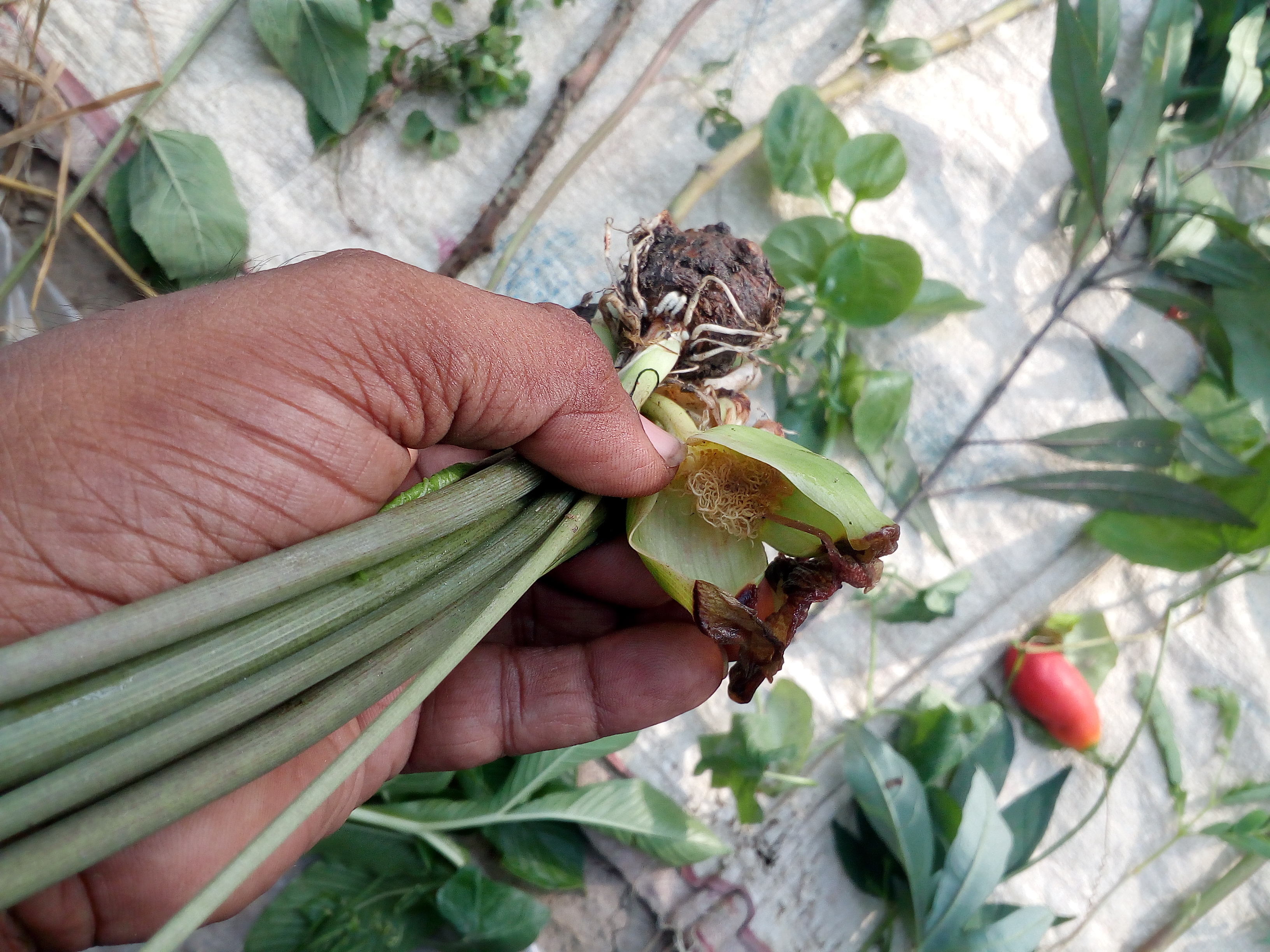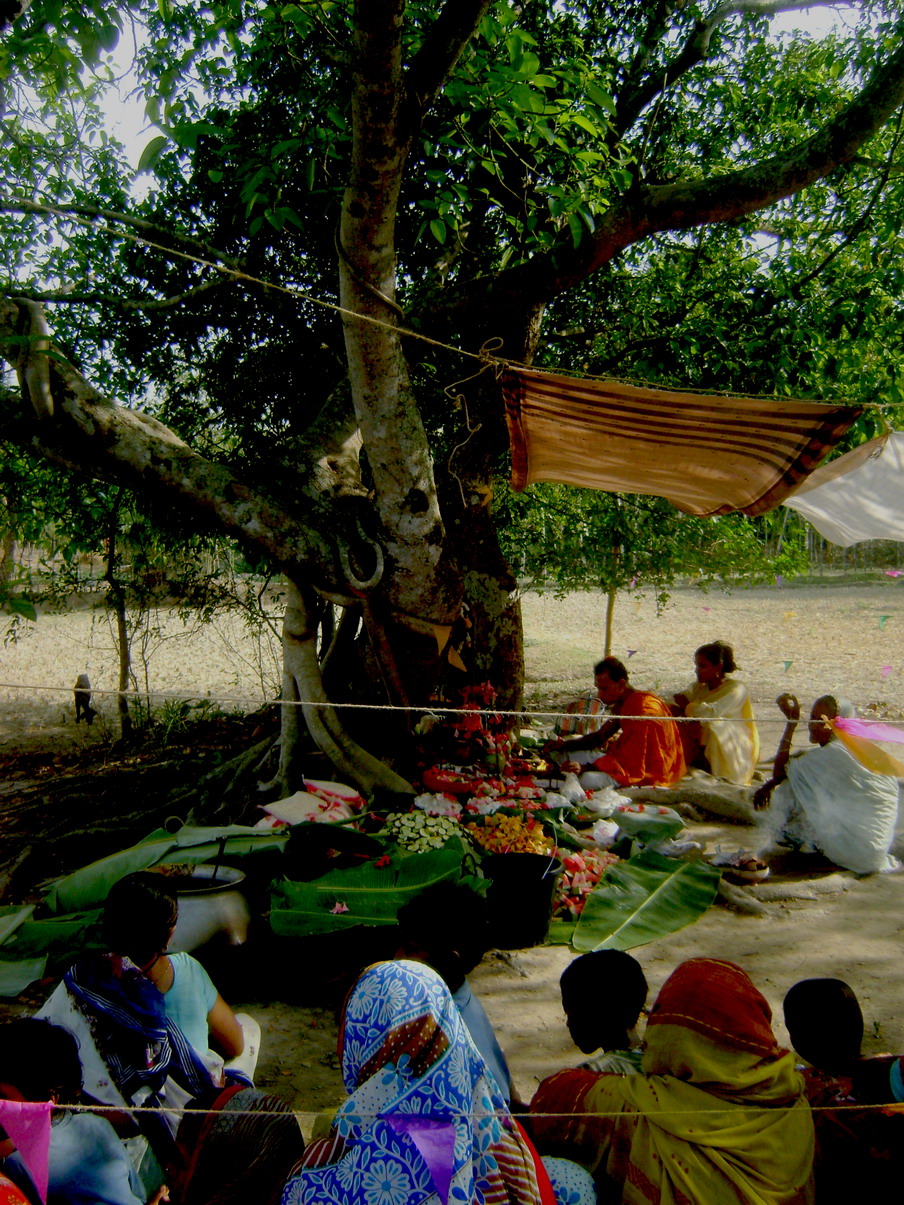Corona, indigenous knowledge and science of nature
Pavel Patha
The corona situation once again has brought to light the importance of indigenous knowledge (IK) and the spirits of nature though this knowledge and strength still remains `unrecognized’. There have been several reasons behind this unrecgonition of indigenous knowledge and science of nature. Perhaps the historical conflict between academic knowledge and that of IK is the main issue of this or maybe the issue of structural social discrimination has come more prominent? However, people in rural areas have been practicing indigenous knowledge based practices or treatment to cure and prevent themselves from different diseases since the time immemorial. They have developed different practices and knowledge to protect or to cure themselves from past pandemic situation like Cholera, Kala-azar, Plegue and even from chicken pox. Historically the Indigenous societies and also the rural subaltern practice lockdown, isloation, quarentine and symptom based treatment to tackle any new disease or even pandemic threat. It is to mention that these methods had been the discovery of indigenous knowledge during pendemic or any hard situation. People in the ancient time had developed these practices in a collective approach and till today some societies and people in the world practice this knowledge. During the Corona pandemic we are also following the stated steps like lockdown, quarentine, isolation and sypmtom based treatment globally. But still the present pandemic situation not recognized or articulated the local traditional practices related to combat crisis in mainstream policies.
Local knowledge to combat diseases
There has been accusation that `people’ in Bangladesh do not maintain the lockdown and even they do not follow the quarentine system. But the real truth is that indigenous communities have been maintaining lockdown and follow the system of quarentine in their traditional way since March 2020. The words `lockdown’ and `quarentine’ which have been most disseminated during this corona season, are known to the indigenous societies in their way. They have been following such a system that protect them from any new diseases or pendemic situation. However, indigenous knowledge should be considered as a collective workforce to combat any pendemic and critical situation. Symtomp based teratment the main formula of IK. The Chakma Talik, Marma Baidya, Mandi Khamal, Munipuri Meiba-Meipa and even the rural Kaviraji (traditional healing system) emphasized on symtomp based treatment. While giving treatment IK always considers sickness, history of sickness, multiple relations in the society and the sorrounding ecosystem and local genetic resources. Though the Indigenous knowledge based treatment has been neglected many times dubbing it as only ‘homemade harbal remedies’ yet it has been the IK which provided the human races the way to live and treatment as well as medicines for thousands of years. Thus it has been seen that during this corona season the institutional doctors, scientists and even the media persons advise people to drink boiled water and continue gurgle, take vitamin C and to consume ginger, garlic, turmeric, neem, clove, cinnamon, blackgram and intake more protein to strengthen the immunity against the attack of corona. All these treatment methods have been the invention of IK and it has been proven that the experience and application of IK has paved way for the people across the world to protect them from the the present pandemic situation again physically and mentally. So, the question is raising again that why we are not recognizing the strength and nessecity of indigenous wisdom and the science of nature in mainsteam policies?
Indigenous lock down
The indigenous communities have been able to adopt to lockdown, isolation or quarentine because they have been practicing this customary system since the time immemorial. The Mro indigenous in Bandarban once used to isolate their villages to get rid from any pendemic diseases and the ritual that they practiced that time was called Ang-Dub and Pwua-bhang. When any pendemic disease arrived they prepare to isolate their village from other. During that situation they collected some special small stones from the hilly stream early in the morning. They used to draw the spellbound words to cast away the disease on the small stones. They tied a tiny thread to fence around the whole village area. All entrace of the village remained closed that time. The Mro people in Bandarban practice the Pwua-bhang ritual to lockdown their village during this corona season. The Pangkhua people in Rangamati and Bandarban practice some ritauls to get rid from any pendemic diseases. They too collected small stones from the hilly stream and sketched the spell bounded words on the body of that stones. The Pangkhua called that ritaul ‘Lungteronget-yn-towale-rit’. After practicing the ritauls they lockdown their village which is called ‘Khuwa Khar’ in their language. No outsider can enter into the village and even the people inside the village have to ensure that they have made themselves safe before entering to their houses. This is called ‘Mei Rakan’ in Pangkhua language. The names of lockdown ritual in Mandi (Garo) languge is ‘Denmarang.aa’, in Lyngyam language this is called ‘Khang Chunang, in Chakma language it is ‘Adam Bon Garana’, while in Khasi language it is called ‘Khang Kerdep chnong’. On the other hand, the Koch and Berman lockdown their village through ‘Geram Puja’ and Tripura lockdown their village through ‘Kerr Puja’. The concepts of lockdown and quarentine had been found even in Ayurveda and Sanhita. This proved that the lockdown and isolation concept which are used to stop the spread of any pendemic disease, is not a new ideas given by any mainstream agency like World Health Organization (WHO). Actually it is the indigenous knowledge based practice prevailed among the communities which is now institutionally known as a terminology ‘lockdown’ to us all.
Known medicine and healer
The corporate driven medical system could never combat the disease. The food habit, health instruction, way of living and even the gene diversity of humans have its impact on combating the disease. Mongolia, Combodia, Vietnam, Laos, Taiwan, Nepal, Bhutan and even Myanmar people dealt with corona virus compare to `developed world’. This virus has not spread widely in Northeast states of India and even in Chittagong Hill Tracts area of Bangladesh as well. We can learn from SriLanka regarding how the country controls the spread of the virus. However, the above mentioned countries’ food cultures and health instructions are closely related to natural way. The natural science plays vital role in strengthening the immune system of humans. Besides, the indigenous health instruction focuses on the social and cultural relationship of humans and that of medicine. But mostly we have no clear idea regarding the ingredients of corporate medicines. On the other hand, the experienced traditional healers are familiar to local people and they know the whole life history of local people whom they have seen to grow up. Thus, in case of symptom based treatment the healers have to analyze the sickness history and other aspects of the patients. Some indigenous people’s experienced traditional hearlers mentioned that they know about medicines and treatment technique to cure patients which have symptom alike corona patient. Therefore, in order to combat the corona crisis situation the mainstream policies can incorporate the experiences of indigenous knowledge based treatment and even Ayurveda, Homeopathy, Unani and traditional Kaviraji should be in the list. Perhaps, this kind of pluralistic health approach of the state could have its shape to combat the corona crisis.

The philosophy of `disease’
The indigenous communities have the belief that human’s sickness appeares because they injure the nature. The shape of drought and flood make their existence in the annual rings of plants and it is the same the sickness remain in the flesh or memory of humans. Analyzing the indigenous rituals it has been found that indigenous communities pray for the wellbeing of life forms on the earth during the practice the rituals. The sickness of bamboo causes the exccessive reproduction of rats and degrading the forest as well as killing all the wild beasts will impact on humans life and livelihoods. The indigenous communities have warned the world but no one paid heed. So we need to clarify the philosophy of `disease’, not only the human being also the other lifes of ecosystem.
Think progress not consumption
The Santal communities in Dinajpur in their annual Baha festival on March 2020 receive the Sal (Shorea rubasta) flower praying together to get rid of corona crisis for all living being. This says that before taking or receiving any element of nature one has to bow infront of the nature and pray. This is how the indigenous rituals have been created. However, now a days, due to the neo-liberal corporate world no one know regarding any prohibition in different months of a season and though they know they never emphasize on abiding by the rules. We can easily found any vegetable and fruirs are available in the market throughout the year and thus, it is hard to realize which season is right now. But the spirit of indigenous life is not consumption; protection for progress of nature. This connects one life with other life and thus develop an interdependent relationship. Therefore, the traditional conservation wisdom of indigenous knowledge and natural science could protect us from the cruel attack of any pandemic even present corona virus if abandon our consumption habit and bow to the nature for its progress.
Pavel Partha : Researcher, Ecology and biodiversity Conservation. Email: [email protected]
Translation: Silvanus Lamin

